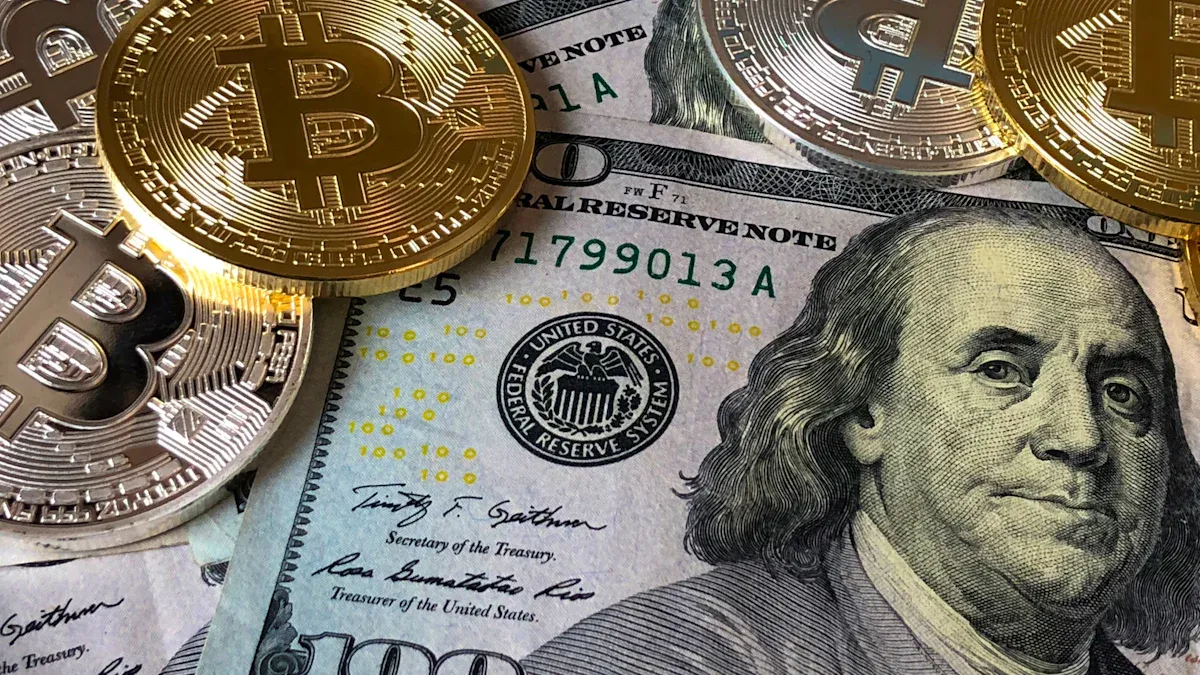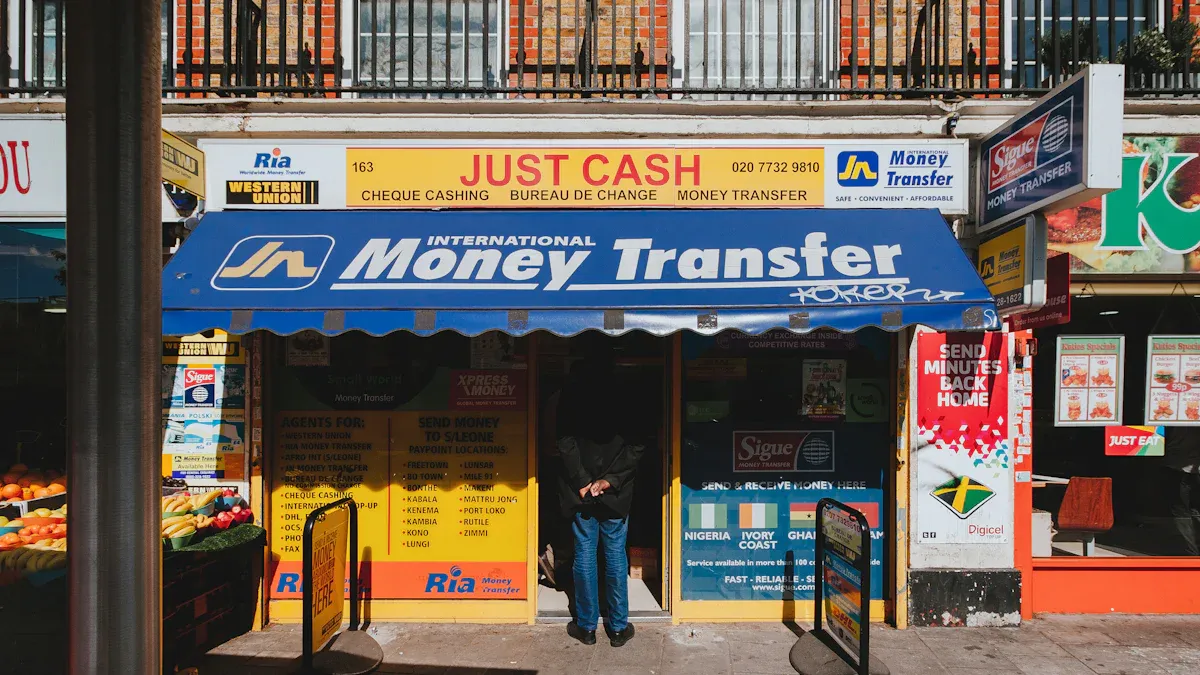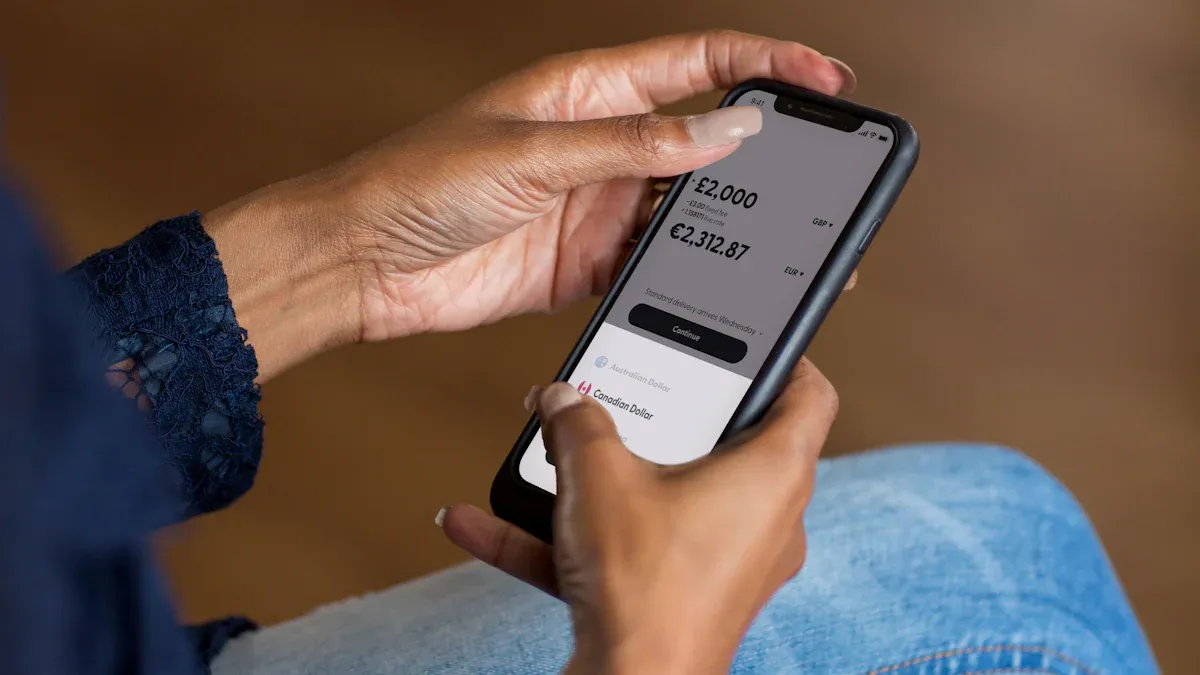- EasyCard
- Trade
- Help
- Announcement
- Academy
- SWIFT Code
- Iban Number
- Referral
- Customer Service
- Blog
- Creator
The Unknown Secrets of Saving Money on Stablecoin (USDT) Cross-Border Remittances

Image Source: pexels
Have you found that after using stablecoin (USDT) for cross-border remittances, the actual savings are far less than expected? You are not alone. Many people switch to this new method but end up paying more because they overlook several “invisible toll stations”.
In fact, the cost potential of stablecoins far surpasses traditional banks. You see, the theoretical fee gap is very obvious:
The problem is that your money quietly slips away during the transaction process.
Core Takeaways
- USDT cross-border remittances are cheaper than traditional banks but have hidden fees.
- Choosing the TRC-20 network for transfers can save a lot of money.
- Selecting reputable platforms and merchants can reduce transaction losses.
- Using compliant platforms for withdrawals can ensure fund security.
- Protect your wallet mnemonic words and beware of scams and phishing links.
Stablecoin (USDT) Cross-Border Remittances: Unveiling Three Major Hidden Costs

Image Source: unsplash
You thought you found the perfect money-saving solution, but the funds shrink upon reaching the destination. This is because during stablecoin (USDT) cross-border remittances, there are three main “invisible toll stations” quietly devouring your profits. Let’s unveil them one by one.
Cost 1: The Invisible Trap of Platform Spreads
The USDT prices you see on C2C platforms are not singular. The platform displays both a “buy price” and a “sell price”, and the difference between them is the “spread” (Spread).
This spread is a hidden transaction cost. When you buy USDT with fiat, you pay the higher “sell price”; when you sell USDT back to fiat, you receive the lower “buy price”. The larger the spread, the more money you invisibly lose.
This cost is influenced by market liquidity and volatility. Therefore, before trading, you should spend a few minutes comparing real-time quotes across different platforms and choose the one with the smallest spread.
Cost 2: High Network Transfer (Gas) Fees
Transferring USDT from one wallet address to another requires paying network fees, also known as “Gas fees”. Choosing different transfer networks results in vastly different fees.
Ethereum (ERC-20) network is one of the most famous, but its issue is network congestion. When many users initiate transactions simultaneously, everyone competes to raise Gas fees for priority processing, like an auction, causing fees to skyrocket. When conducting stablecoin (USDT) cross-border remittances, choosing the right network is crucial.
| Network | Average Transaction Fee (USD) |
|---|---|
| ERC-20 | High, possibly from $5 to over $20 |
| TRC-20 | Very low, usually under $1 |
| BEP-20 | Low, usually under $0.1 |
From the table, it is clear that choosing the TRC-20 network can save you a significant amount.
Cost 3: Exchange Rate Losses in Deposit and Withdrawal
The final cost checkpoint appears in the steps of buying and selling USDT. Quotes provided by C2C merchants usually deviate from the real-time USD exchange rate. For example, merchants may sell you USDT at a slightly higher than market rate and buy it back from you at a slightly lower rate. This exchange rate difference is the merchant’s profit and your cost. When selecting merchants, besides reputation, you also need to focus on the gap between their quotes and the real-time exchange rate to minimize this loss.
Money-Saving Practice: Three Steps to Minimize USDT Remittance Costs

Image Source: unsplash
Having understood the three major hidden costs, you now hold the initiative in saving money. Now, let’s enter the practical phase. Follow these three simple steps to minimize the cost of stablecoin (USDT) cross-border remittances, ensuring funds arrive efficiently and securely at the destination.
Step 1: Choose Low-Spread Platforms and High-Quality Merchants
Your first step is to select a battlefield with the lowest transaction costs. This means finding a C2C platform with small spreads and fair merchant quotes.
When choosing merchants, price is not the only factor; reputation and reliability are equally important. A high-quality merchant ensures smooth transactions and avoids unnecessary disputes. You can identify reliable merchants through the following points:
- Look for Certification Badges: Many platforms certify reputable merchants. For example, Gate.io provides “blue badge verification tags” for merchants with excellent trading history. These badges are the platform’s first layer of assurance for you.
- Check Trading History: View the merchant’s total trading volume and success rate. A merchant with high volume and near 100% success rate is usually more trustworthy.
- Utilize Platform Security Features: Prioritize platforms offering “escrow services”. This service temporarily holds funds until both parties confirm completion, effectively preventing fraud.
Operation Tip: Before trading, spend a few minutes opening multiple mainstream C2C platforms for comparison. You need to focus on two data points: the platform’s own buy-sell spread and the gap between the target merchant’s quote and the real-time USD exchange rate. Choose the one with the lowest overall cost.
Step 2: Lock in the TRC-20 Network for Transfers
Choosing the right transfer network is the most direct and effective step to save money. As mentioned earlier, fees vary drastically across networks. The TRC-20 network, with its extremely low fees and fast speeds, is the top choice for USDT transfers.
The TRON network is designed to support high transaction volumes and low fees. It can process up to 2,000 transactions per second, ensuring your transfer completes almost instantly.
Let’s feel the speed difference more intuitively through data:
| Network Standard | Transactions Per Second (TPS) | Block Speed |
|---|---|---|
| ERC-20 (Ethereum) | About 15 | 15 seconds |
| BEP-20 (Binance Smart Chain) | Faster | About 3 seconds |
| TRC-20 (Tron) | Up to 2,000 | 3 seconds |
The cost advantage is even more astonishing. TRC-20 network transfer fees are usually under 1 USD, while ERC-20 can exceed 20 USD during busy periods.
To use the TRC-20 network, ensure both your trading platform and the recipient’s wallet support it. Currently, most mainstream exchanges and wallets do, such as:
- Wallets: Trust Wallet, Klever Wallet, TronLink
- Exchanges: CoinCola, Binance, OKX, Gate.io, etc.
When withdrawing, simply select TRC-20 (TRON) in the network options.
Step 3: Explore Better Compliant Withdrawal Channels
Converting USDT to local fiat is the final step in remittance and also the riskiest. Trading with individual merchants on C2C platforms is convenient but carries potential risks due to complex fund sources. To ensure fund security and compliance, exploring more reliable withdrawal channels is crucial.
Choosing regulated compliant institutional platforms is a safer option. These platforms are subject to strict financial regulation, ensuring legal compliance and clear fund sources.
- Compliant Trading Platforms: Platforms like Coinbase and Kraken are strictly regulated, offering high levels of fund security.
- Global Multi-Asset Wallets: Some emerging fintech apps provide more convenient solutions. For example, BiyaPay is a global multi-asset trading wallet that not only supports digital currency trading but also offers efficient fiat exchange services. It features low transaction fees, fast arrivals, and compliance security, providing a reliable alternative to traditional C2C trading.
Importance of Compliance: Before any fiat exchange, you must understand and comply with local regulations. Compliant platforms require “Know Your Customer” (KYC) verification, including submitting identity and address proofs. This process protects you from fraud and illegal transactions and ensures platform legal compliance.
Additionally, consider tax implications. In many countries, converting cryptocurrency to fiat is a taxable event.
| Country/Region | Long-Term Holding (>12 months) | Short-Term Trading (<12 months) |
|---|---|---|
| United States | 0%, 15%, or 20% capital gains tax | Taxed at ordinary income rates |
| Germany | 0% capital gains tax | Up to 45% income tax |
| Portugal | 0% capital gains tax | 28% capital gains tax |
For example, in the US, selling crypto assets held over a year qualifies for lower long-term capital gains tax rates. Failing to report may lead to penalties. Due to complex and changing tax laws, consult local tax professionals for accurate information.
Security Guide: Protect Your Funds and Privacy
While enjoying the convenience of USDT remittances, you must prioritize fund security. Saving money is important, but losing principal renders everything meaningless. Follow this security guide to effectively protect your funds and privacy.
Choose Secure Crypto Wallets
Your crypto wallet is the first line of defense for funds. Choosing the wrong wallet is like handing your house keys to a stranger. Prioritize “non-custodial wallets”, meaning you fully control the private keys, not a third-party platform.
Among many wallets, some widely recognized options provide stronger security:
- OKX Web3 Wallet: It offers MPC technology options for enhanced security. Its transaction simulation feature lets you preview outcomes before signing contracts, effectively preventing asset theft.
- Trust Wallet: This wallet includes protection against malicious programs. However, note that it does not support two-factor authentication (2FA), posing some security risks.
Security Core: Safeguard Your Mnemonic Words Mnemonic words are the only way to recover your wallet. You must write them on paper and store in a fireproof, waterproof safe place. Never take screenshots or store on connected devices, and never share with anyone. Anyone asking for your mnemonic words is a scammer.
Beware of High-Yield Scams and Phishing Risks
The crypto world is full of temptations but also traps. Stay highly vigilant against projects promising unrealistic returns.
A simple judgment criterion: Any USDT investment project promising annual yields over 20% is highly likely a scam. These are often called “High-Yield Investment Programs” (HYIPs), using new investors’ funds to pay “interest” to old users; once the chain breaks, the platform absconds with the money.
Additionally, beware of “phishing attacks”. Scammers create fake websites or apps mimicking legitimate exchanges, luring you via email or SMS to enter private keys or mnemonic words.
Operation Tips:
- Carefully Check URLs: Before trading, confirm the website URL is official.
- Download Only from Official Channels: Only download wallets and trading apps from official websites or app stores.
- Beware of Unknown Links: Do not click any suspicious links or emails.
Anonymous Transfer and Privacy Protection Techniques
In some cases, you may want to enhance transaction privacy. Although USDT transaction records are public, you can take measures to protect personal information.
An advanced technique is using privacy coins like Monero (XMR) as an intermediary. Convert USDT to XMR first, transfer, then convert XMR back to USDT at the receiving end. Since XMR transactions are anonymous, this effectively breaks transaction traceability.
Meanwhile, in C2C trading, avoid directly using payment tools bound to your real name. Choosing non-custodial wallets that do not record personal data also enhances privacy from the source.
You now understand that successful stablecoin (USDT) cross-border remittances hinge on “careful calculation”. Review our three money-saving steps: choose the right platform, use the right network, optimize deposit and withdrawal. While saving money, always prioritize fund security and enable two-factor authentication (2FA) and other measures.
Act now! Apply these secrets to your next remittance, and you can experience over 75% lower fees than traditional banks, truly achieving efficient, low-cost global fund flow.
FAQ
What is USDT? Why is it suitable for remittances?
USDT is a stablecoin; think of it as digital USD. Its value is pegged to the dollar, very stable. Because transfer fees are far lower than traditional banks and speeds are fast, it has become a popular cross-border remittance choice.
Why does my money still decrease when using USDT for remittances?
You may have encountered three “invisible toll stations”:
- Platform Spread: Difference between buy and sell prices.
- Network Fees: Gas fees paid to the network during transfer.
- Deposit/Withdrawal Losses: Gap between merchant quotes and real-time exchange rates.
Which network should I choose for transfers?
Prioritize the TRC-20 network. It has extremely low fees and fast speeds, currently the highest cost-performance choice for USDT transfers.
| Network | Average Fee (USD) |
|---|---|
| TRC-20 | Usually under $1 |
| ERC-20 | Possibly up to $5 - $20 |
Is C2C trading safe? Are there better options?
C2C trading is convenient but carries risks like unclear fund sources. For higher security, choose regulated compliant platforms or global multi-asset wallets like BiyaPay for withdrawals; they provide stronger fund security.
Is using USDT for remittances in mainland China compliant?
You must understand and strictly comply with local laws and regulations. Mainland China has strict regulatory policies on cryptocurrency trading and exchanges. Before any operation, ensure your actions comply with all relevant legal requirements to avoid potential risks.
*This article is provided for general information purposes and does not constitute legal, tax or other professional advice from BiyaPay or its subsidiaries and its affiliates, and it is not intended as a substitute for obtaining advice from a financial advisor or any other professional.
We make no representations, warranties or warranties, express or implied, as to the accuracy, completeness or timeliness of the contents of this publication.




Contact Us
Company and Team
BiyaPay Products
Customer Services
BIYA GLOBAL LLC is a licensed entity registered with the U.S. Securities and Exchange Commission (SEC No.: 802-127417); a certified member of the Financial Industry Regulatory Authority (FINRA) (Central Registration Depository CRD No.: 325027); regulated by the Financial Industry Regulatory Authority (FINRA) and the U.S. Securities and Exchange Commission (SEC).
BIYA GLOBAL LLC is registered with the Financial Crimes Enforcement Network (FinCEN), an agency under the U.S. Department of the Treasury, as a Money Services Business (MSB), with registration number 31000218637349, and regulated by the Financial Crimes Enforcement Network (FinCEN).
BIYA GLOBAL LIMITED is a registered Financial Service Provider (FSP) in New Zealand, with registration number FSP1007221, and is also a registered member of the Financial Services Complaints Limited (FSCL), an independent dispute resolution scheme in New Zealand.




















